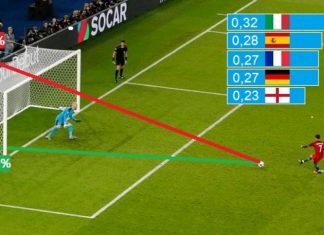The terms Stake, Yield (Revenue) and ROI (Return on Investment) confuse many people. We have also noticed many online publications using these terms incorrectly.
Stake
When applied to gambling, Yield measures betting efficiency compared to total turnover.
In the online world of gambling, stakes are electronically placed on a desired outcome with another party that has agreed to accept your stake, whether this be a bookmaker or an anonymous person/group in a betting exchange.
These ‘adversaries’ are effectively backing with their own money against your selection, hoping to make a profit of your stake if your selection in the event turns out to be wrong.
Once the outcome of the event is decided, stakes are returned to you in full if your bet has won (plus the winnings), or, if you lose the bet, the stake is lost and either retained by the bookmaker, or transferred to the winning side in the betting exchange.
Technically speaking, stakes are guarantees! This means that they are short-term deposit payments to guarantee that the losing party can and will honour his debt obligation to the winner of the bet.
Yield
The sum of money gambled on the outcome of an event. The amount of money played with, or placed as a bet.
If your aversion to risk is low, you will select bets with higher probabilities. Bets with higher probabilities of winning carry lower odds. Lower odds means a smaller yield.
If you enjoy higher risk strategies, the opposite will apply.
Generally speaking and depending upon the strategy employed, a good bettor will yield between 5 and 10 percent profit in the long run.
In football betting any yield over 7% is considered to be a very good result.
Yield Formula:
PL divided by ∑MS (written as a percentage):
YIELD = PL (profit/loss) / ∑MS (capital employed)
Example #1: YIELD
A bettor places 38 bets with stakes of 20 units each. The total amount staked [Capital Employed] is 760 units (38 x 20). 33 of the bets win and 5 of the bets lose; the net result [Profit] is a bank growth of 65 units.
YIELD = 65 / 760 = 0,0855 ή 8,55%
Yield in this example is 8.55%
It must be remembered that in the Yield formula, the sum of money staked (∑MS) includes all stakes, even those that have not been lost. (In other words, the refunded stakes from asian handicap bets).
Yield is NOT the same as ROI (Return on Investment)!
Return on Investment (ROI)
The ratio of money gained or lost on an investment relative to the amount of money invested. In other words, the profit/loss ratio as a function for investment (capital employed). ROI is also known as ‘rate of profit’ or sometimes just ‘return’.
ROI formula:
Return On Investment (ROI) = PL (profit/loss) / Investment
If you bet systematically, your starting capital will be turned over again and again: It is effectively the same money you are investing. (So long as you don’t lose every bet!).
The ROI formula resembles the yield formula, but here, profit/loss is related to the actual investment (starting bank) instead of the total of all stakes (turnover).
Example #2: ROI
Returning to our previous illustration, 38 bets were placed, each with a stake of 20 units (760 units staked in total). 5 bets lost but the overall bank growth was 65 units. Let’s assume the starting bank [investment] was 200 units.
ROI = 65 / 200 = 0,325 ή 32,5%
ROI in this example is 32.5%
ROI is always calculated for a certain predetermined amount of time; in finances usually for one whole year, but it is also common and acceptable to calculate the ROI monthly or, in a betting sense, for only the number of bets within a specific time scale (e.g. a whole season of Premier League, or a World Cup tournament final stages).
The return on investment index is especially suitable when the amount of capital has a strong influence on the result (e.g. with arbitrage).












